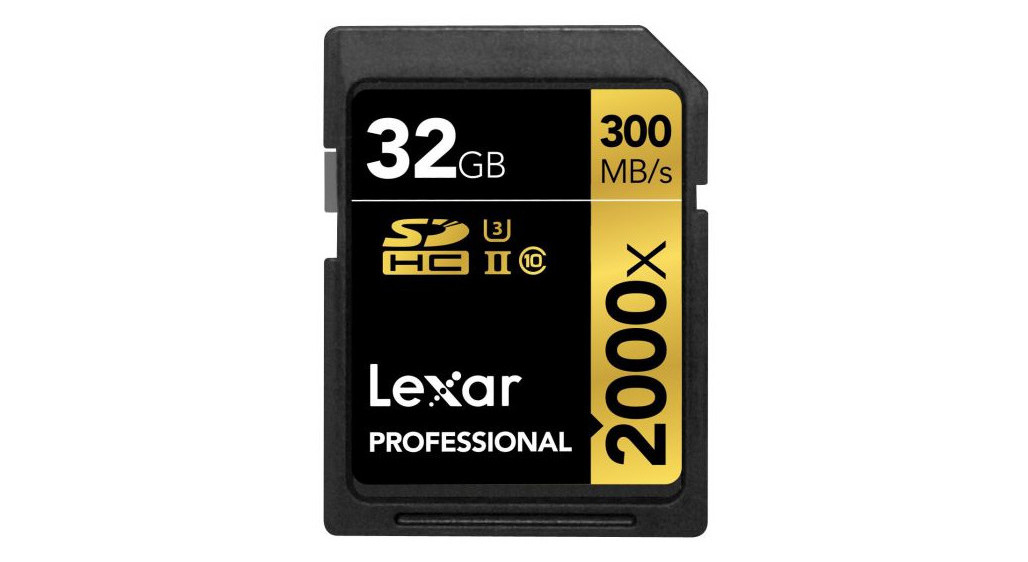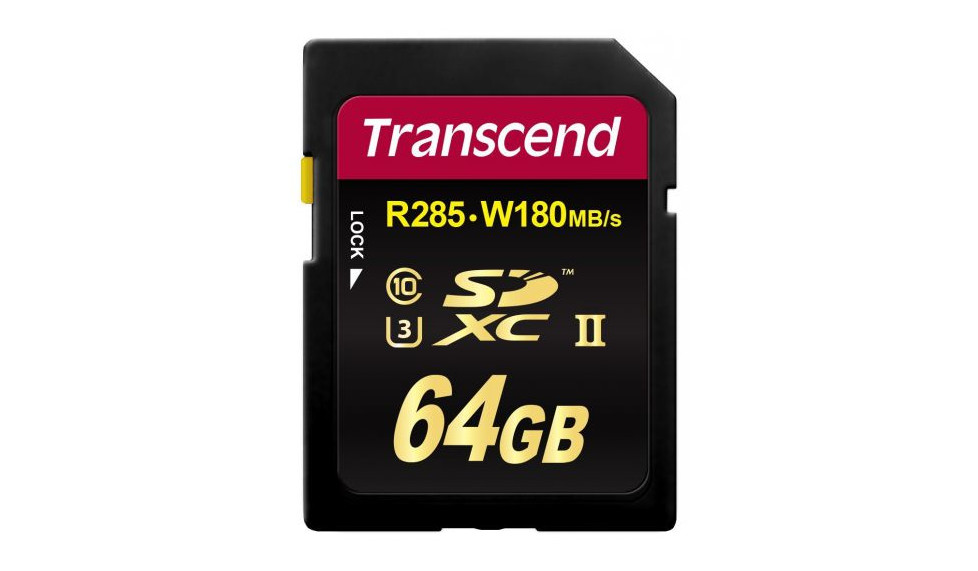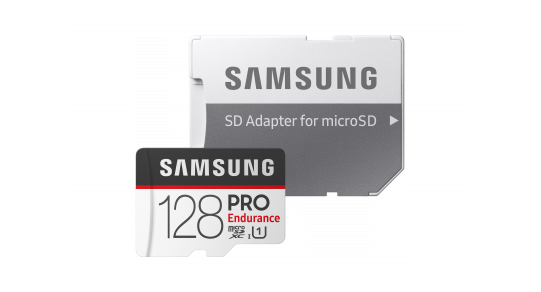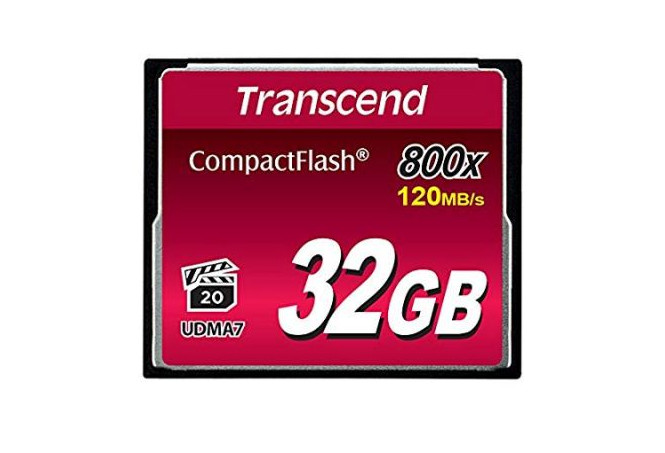What Is A Camera Card
The best memory cards for your camera in 2021
Included in this guide:

The best memory card for your camera is an essential component of your kit, and thus it's worth spending some time making sure you get the right one. Just as an old SLR wouldn't produce anything if no film was loaded, a digital camera can't record any media if there's no card to save it to (though in this case it'll at least give you a warning message).
So what do you need from a memory card? In a digital camera, it needs to have a reasonably high capacity to store all the files, and fast enough transfer speeds to keep up. And as resolutions of sensors increase, speeds of burst rates get faster, and video gains more and more quality, this need is only going to increase.
Different cameras accept different types of memory cards, and it can be quite confusing if you're coming at it fresh. If you're not sure what card type you need, you can jump straight to our jargon-busting memory card type explainer – but an SD card will almost certainly do the job. Most digital cameras take these types of card (these days referred to as SDHC or SDXC), while non-Apple smartphones, tablets and action cameras will generally take micro SD cards.
Depending on the specific model of camera you have, you may be able to use faster types like CFexpress, XQD, Cfast or Compact Flash. If you aren't sure, a quick Google or consult of the manual should be enough to find out what type of slot(s) your camera has.
If you're still hunting for your camera, our guide to the best cameras is worth checking out, where we rate our favourite models for beginners, enthusiasts and professionals. We also have a guide to the best camcorders for the video-oriented among you.
The best memory cards for your camera: full list
Best SD cards


01. SanDisk Extreme PRO SD UHS-I
The best SD memory card all round
Card type: SDXC | Capacity: 64GB-1TB | Read Speed: Up to 90MB/s | Write Speed: Up to 170MB/s | Warranty: Lifetime limited warranty | Suitable for: Both photography and/or video (including 4K)
Great rapid fire performance
Stutter-free results
Broad capacity options
Faster cards available
This is the most versatile SD card on the market. The Extreme PRO SD UHS-I is available in capacities ranging from a respectable 64GB to a whopping 1TB, and SanDisk's 'Extreme Pro' designation mean it can stand up to all sorts of punishment and is an ideal choice for outdoor photography and videography. It can write at p to 90MB/s and transfer at speeds of up to 170MB/s, meaning users at all but the highest of resolutions will find it keeps up with their workflow and the level of data crunch they require. It's not the absolute fastest on the market, but it's well priced and reliable. For most users, this is going to be the best choice nine times out of ten.


02. Lexar Professional 633x SDXC UHS-I
A great choice for heavy shooters of photos and videos alike
Card type: SDXC | Capacity: Up to 1TB | Read Speed: Up to 95 MB/s | Write Speed: Up to 45 Mb/s | Warranty: Lifetime limited warranty | Suitable for: Both photography and/or video (including 4K)
Impressive transfer speeds
High capacity options
Robustly built
Pricey at highest capacities
Available in a variety of capacities from 32GB to 1TB, the Lexar Professional 633x SDXC UHS-I is a card designed to undergo the rigours of professional use. Its transfer speeds are fast enough to handle both high volumes of photos and 4K video, so no matter what you plan to shoot, you can rest assured that the card can keep up. While the lower-capacity cards can be picked up for a pretty reasonable price these days, prices climb pretty quickly when you get up to the 1TB level, so do bear that in mind if budget is a concern. If you can stretch to it though, it's a great card that should reward you with many years' use.


03. Lexar Professional Class 10 UHS-II 2000X Speed
One of the best SD cards for professional photographers
Card type: SDHC or SDXC | Capacity: Up to 128GB | Read Speed: Up to 300MB/s | Write Speed: Up to 260MB/s | Warranty: Lifetime limited warranty | Suitable for: Both photography and video (including 4K)
Blistering transfer speeds
Limited lifetime warranty
Tops out at 128GB
Only necessary for pros
Lexar has long been the go-to card for photography enthusiasts and professional shooters, and, despite disappearing from the market for a little while, it has bounced back with plenty of Lexar options still available. A solid choice for us is the Lexar Professional 16GB Class 10 UHS-II 1000x Speed, which deploys UHS-II tech to enable transfer speeds up to 300 MB/s and write speeds up to 260 MB/s. This ensures that whether you're recording full HD, 4K video, or shooting high-resolution Raw files, this card delivers the goods, even if maximum data capacity is 128GB, rather than the maximum 512GB offered by some rivals. A close alternative in terms of specification and performance would be SanDisk's Extreme PRO SD UHS-II (also featured here), but you can't really go wrong with this one.

04. SanDisk Extreme PRO SD UHS-II V90
An even faster card than the UHS-I Pro version
Card type: SDXC | Capacity: Up to 128GB | Read Speed: Up to 300MB/s | Write Speed: Up to 260MB/s | Warranty: Lifetime limited warranty | Suitable for: Pros wanting to shoot swift bursts of high res stills and UHD video
Unrivalled speed
4K and 8K video capture
Great for rapid-fire stills
Biases speed over capacity
Missing that essential shot if you're working as a pro photographer can be an expensive mistake, and is especially irritating if it's because your card can't keep up. Try and avoid the latter ever happening by investing in this ultra speedy (and inevitably costlier) example from industry stalwart SanDisk. The upgraded SanDisk Extreme PRO SD UHS-II offers read speeds of up to 300 MB/s, write speeds of an equally impressive 260 MB/s, and sustained V90 video speeds, it's a class leader among memory cards.
The above specification makes it a must-have option for reportage, sports and wildlife photographers, shooting bursts of rapid fire stills, or videographers wanting the clarity of 4K or 8K resolution video with the inevitable data hungriness that comes with it. As this is an SDXC ('Extended Capacity') card too, storage is impressive. Available card offerings are from 32GB up to 128GB, but the accent is on speed here.

05. Sony SF-G Tough SDXC
A super-robust new breed of memory card
Card type: SDXC | Capacity: Up to 128GB | Read Speed: Up to 300 MB/s | Write Speed: Up to 299 MB/s | Warranty: Manufacturer's | Suitable for: High speed burst photography and video (including 4K)
Tough design
Dust, dirt, water and grime proof
Currently only up to 128GB
Tough build increases cost
The bigger the card's data capacity, the higher the worry of potentially losing hundreds, possibly thousands of precious image files should anything untoward happen. Purporting to eliminate some of that stress is the Sony Tough, supplied in common-use SD format. While arguably no card can claim to be 100 per cent destruction–proof, these come with the boast of being dustproof and waterproof, while possessing 'bend proof' strength into the bargain – namely being able to withstand 18KG of exerted pressure (that's 18 times greater than standard SD).
If you need more convincing still, Sony's Tough has also been tested against drops from five metres in height, while the card can simply be washed clean of any grime that gets on it. Speed wise, a further bonus is the card's ability to cope with the sequential capture of 241-compressed Raw or 362 JPEGs in 20fps burst shooting mode on the Sony A9. If you're a pro shooter and have the budget, you'll definitely want to check this out.

06. Transcend SDXC UHS-II U3
Great for shooting Raw files or high-resolution video
Card type: SDXC | Capacity: Up to 64GB | Read Speed: Up to 285MB/s | Write Speed: Up to 180MB/s | Warranty: Five year limited warranty | Suitable for: Pros shooting rapid fire high res Raw stills and high quality 4K video
Blisteringly fast
Good value for money
Shock and X-Ray proof
Modest capacity
If it's Raw files you primarily need to capture, then you'll want a card that can cope with the highest quality imagery in sequential bursts – as well as one that provides a sufficient storage capacity to avoid having to swap out the media in use at that decisive moment. While the Transcend SDXC UHS-II U3's 64GB maximum capacity (the alternative being 32GB) may initially appear a little small when compared with other options here, the performance is anything but, via commendably quick read and write times of 285 MB/s and 180 MB/s respectively.
Obviously you will need UHS-II compatible DSLR or camcorder to be able to use this one – so check – but speeds of up to 3x faster than standard UHS-1 SD memory cards can be delivered. These Transcend branded cards are also shock and X-ray proof, thereby providing a degree of certainly for photo and video enthusiasts and pros.

07. PNY Elite Performance SDXC 512GB
Top capacity SD media card for all your digital memories
Card type: SDXC | Capacity: Up to 512GB | Read Speed: Up to 95MB/s | Write Speed: Not specified | Warranty: Lifetime (limited) | Suitable for: High speed burst photography and video (including 4K)
Water and shock proofed design
Fair price
Lifetime warranty
Faster alternatives available
Though there are plenty of budget priced card offerings bearing the US-based PNY brand, the PNY Elite Performance SDXC series, with capacities from a useful 32GB up to a generous 512GB, currently tops the range. It offers not only a high capacity, but also an industry-standard read speed of 95MB per second from an SDXC format card. The 'Elite' moniker signifies that these Class 10 speed, UHS-1 compatible cards are not only suitable for shooting video on a DSLR with, but are also durable with it, being waterproof, shock proof, temperature proof and magnet proof. Thus the brand is able to claim that the Elite Performance range of cards are suitable for advanced photo enthusiasts and even professionals, as well as those recording 4K quality clips. Peace of mind of a lifetime-limited warranty is provided.

08. SanDisk Extreme 90MB/s
A fantastic budget SDHC card
Card type: SDHC | Capacity: Up to 256GB | Read Speed: Up to 90MB/s | Write Speed: Up to 40MB/s | Warranty: Lifetime limited warranty | Suitable for: Both photography and video (including 4K)
Good performance
Robust for its price
Not as fast as other SanDisk cards
Limited capacity
If you're looking for a great performing memory card with a decent amount of storage capacity, while keeping costs down, then the SandDisk Extreme card is a very good choice. Unlike the 'Pro' versions, this is a budget memory card, and it offers UHS Speed Class 3 compatibility, so if you're taking videos in 1080p – or even 4K – then this card will be plenty fast enough. Best of all, it features water, temperature and shock-proof technology, so you can take it out and about with you without worrying about it getting damaged.
- Back to top ^
Best microSD cards

09. Samsung PRO Endurance
The best MicroSD card, suitable for an array of devices
Card type: microSD (With SD adapter) | Capacity: Up to 128GB | Read Speed: Up to 100MB/s | Write speed: Up to 30MB/s | Warranty: Up to 5 years | Suitable for: Action cameras, dashcams, security cameras
Super durable
Suits all sorts of devices
Fiddly to handle
Very easy to lose
The Samsung PRO Endurance is our pick for the best MicroSD card around right now. It does cost a little more to get a microSD card with larger SD card-sized adapters, although this series is still very reasonably priced.
The draw here includes the fact that the cards are claimed to be able to withstand harsh environments, are longer lasting and are particularly suited to use in action cameras. This is because they can continually record at high read/write speeds (100MB/s and 30MB/s, respectively). Also promised for the highest capacity card is an industry best of 43,800 hours of continuous video recording. Peace of mind comes courtesy of warranties of between two years for the lower capacity cards, to five years for maximum capacity cards.

10. SanDisk Extreme Pro microSDXC UHS-I
Best microSD card with BIG amounts of storage
Card type: microSDXC | Capacity: up to 1TB | Read Speed: Up to 170MB/s | Write Speed: Up to 90MB/s | Warranty: Lifetime limited warranty | Suitable for: High capacity image taking and creation
1TB on a tiny card
Broad device compatibility
Slow read speed
More than needed for phone use
The SanDisk Extreme Pro microSDXC UHS-I is another microSDXC card and larger SD adapter combo for those prolific image makers sticking their cards in a variety of slots; here available in a variety of storage capacities ranging from 32GB all the way up to a whopping 1TB. Imagine that from solid state media the mere size of a fingernail. However, while read and write speeds for these cards are adequate, they're not quite the quickest on the market at a read speed of 'only' 170MB/sec maximum and a write speed of up to 90MB/sec. If it's speed you want rather than capacity, alternatively look at the same manufacturer's UHS-II cards in the series, which max out at 128GB capacity, yet offer a transfer speed of a slightly more satisfying 275MB/sec.

11. Samsung EVO Plus
Best budget microSD card with SD card adapter
Card type: microSD (With SD adapter) | Capacity: Up to 512GB | Read Speed: Up to 100MB/s | Write Speed: Up to 30MB/s | Warranty: 10 years | Suitable for: Day to day photography
Generous read speed
Well protected
Fiddly without adapter
Easily lost
The Samsung EVO Plus microSD spans capacities from 32GB to 512GB. This Class 10 microSD cards comes with an SD adapter that allows it to be used in cameras just as easily as a smartphone or tablet. Costing less than £10/$10 for the lowest 32GB capacity, this seems like good value considering it manages read speeds of 100 MB/s (albeit a modest write speed of 30MB/s).
A bright red design also ensures this jack of all trades option from Samsung won't readily get lost down the back of the sofa, despite being fingernail sized. Peace of mind also comes via a 10 year limited warranty, plus the fact that this card is claimed as waterproof, temperature proof, X-ray proof and magnet proof.
- Back to top ^
CFExpress, XQD, CFast and Compact Flash

12. SanDisk Extreme PRO CFexpress Card
The best CFexpress memory card
Card type: CFexpress Type B | Capacity: Up to 512GB | Read Speed: Up to 1700MB/s | Write Speed: Up to 1400MB/s | Warranty: Not specified | Suitable for: Pro photography
Incredible speeds
Big capacity options
The card of the future
Compatibility (currently) limited
CFexpress is the latest memory card format to hit the market – and these super-fast cards are being used in a wide number of top-end mirrorless cameras, DSLRs and professional camcorders such as the Canon EOS-1D X III, Nikon D6, Nikon Z7 and Panasonic Lumix S1. With a phenomenal 1400Mb/s write speed, the SanDisk Extreme PRO CFexpress Card and others like it are creating a new benchmark for camera performance - and for card reliability. The price a the moment for these cards is expensive, but for professional use it is well worth the investment. This is a CFexpress Type B card; in time there will also be a smaller Type A card, and a larger Type C card, too.

13. Sony XQD G Series Memory Card
The best XQD card around right now
Card type: XQD | Capacity: 64GB-240GB | Read Speed: Up to 440 MB/s | Write Speed: Up to 400 MB/s | Warranty: Manufacturer's | Suitable for: High speed burst photography and video (including 4K)
Super-fast transfer speeds
Robust build
Limited compatibility
Format facing redundancy
The Sony XQD G Series Memory Card is in the XQD format is not used in every camera, but has been adopted by Nikon for some of its DSLRs and recent Z-series full-frame mirrorless cameras (as well as Sony's high-end video camcorders). The format is set to become redundant, as it uses the same form factor as the more recent CFexpress Type B cards, but this does mean that prices have started to become more reasonable.

14. SanDisk Extreme PRO CFast 2.0 Memory Card
CFast is a niche format, but if you can use it, this is the card to buy
Card type: CFast 2.0 | Capacity: 64GB-512GB | Read Speed: Up to 525 MB/s | Write Speed: Up to 450 MB/s | Warranty: Manufacturer's | Suitable for: High speed burst photography and video (including 4K)
Fast enough for 4K
Good range of capacities
Niche compatibility
Not very future-proof
CFast made its debut as an upgrade on Compact Flash, at around the same time as XQD. It got overshadowed by XQD, in much the same way that XQD subsequently got overshadowed by CFexpress, but there are a few cameras with CFast compatibility that can make use of these speedy, high-capacity cards. Canon's cine range in particular sported CFast slots for a while, including EOS C300 Mark II, EOS C700 and XC15. Blackmagic made use of a CFast slot on its Pocket Cinema Camera 4K and URSA Mini, and even DSLRs got a look in with the Canon EOS-1D X Mark II sporting a CFast slot. If your camera has a CFast slot, then this is a reliable card for shooting 4K or high-intensity burst mode.

15. Transcend CompactFlash 800
Transcend's CF gives plenty of data storage for your buck
Card type: CompactFlash | Capacity: Up to 256GB | Read Speed: Up to 120MB/s | Write Speed: Up to 60MB/s | Warranty: Five year limited warranty | Suitable for: Both photography and video (including Full HD)
Swift and easy file transfer
Optimised for video
No lifetime warranty
Format no longer popular
While it may not be as recognisable to the casual observer as competing card brands, Transcend is one of the longer-term players in the market – and, usefully, still makes many low-capacity cards, holding obvious appeal for those on tighter budget. However, even the higher capacity offerings that may appeal to semi pro DSLR users – such as this CompactFlash 800 series – are hardly expensive for what's on offer.
Capacities run from a standard 32GB up to a slightly more impressive 256GB. Specification is also solid for a budget card; here we get read speeds of up to 120 MB/s and write speeds of 60 MB/s. Actual performance of course is affected by camera hardware and software, as is the case with any card. However, there's a built-in error correcting code here to detect and correct any transfer errors.
- Back to top ^
Memory card types explained
All the different acronyms and numbers involved in memory cards can be pretty overwhelming for the unaccustomed. It's simpler than it appears: all this means that when you're choosing the best memory card for your camera, smartphone or tablet, you're selecting one that actually physically fits it.
Check with the manufacturer of your device if you're unsure; the information will be floating around somewhere. Here's a quick explainer of the different card types you're likely to encounter, all of which we've included in this guide.
SD / SDXC / SDHC
These are the most common types of card used in camera; it's highly unlikely that your camera won't accept some form of SD card. Standard-sized SD cards come in three main types: SD, SDHC and SDXC. The standard SD type is no longer found in stores, so you typically have the choice between SDHC or SDXC. The older SDHC cards have a capacity of between 4GB and 32GB. SDXC cards have a capacity of at least 64GB, going up to 1TB. Some devices will only support cards up to a certain capacity.
microSD
The smaller counterpart to SD cards (as you might have guessed), microSD cards are more commonly used in smartphones and tablets, as well as some drawing tablets, as opposed to cameras. They're slower than SD cards, but can still generally store large capacities of information for their size.
SD speed classes: UHS / UHS-II
These are standards for SD and microSD cards, and refer to the cards' bus speeds (file transfer speeds). The fastest SD and microSD cards use the UHS-II bus standard – however, to actually get the benefit of the extra speed, your camera or other device needs to be UHS-II compatible.
Some cameras have two card slots, one may be UHS-II and the other just UHS-I. UHS-I cards have a maximum bus speed of 104MB/s, while UHS-II cards have a maximum bus speed of 312MB/s.
XQD
Sony developed the XQD format as a faster, higher-capacity and more reliable alternative to SD cards. They're physically thicker and stronger than SD cards, and have generally been used in professional video and filmmaking applications. It's common to find XQD card slots in camcorders, but Nikon's Z series of mirrorless consumer cameras also caused a stir when they initially came out with a single XQD slot.
CFExpress
CFExpress cards are physically identical to XQD cards, down to the connector pins. This means that theoretically any device capable of using XQD can also use CFExpress cards, though in practice this relies on the manufacturer having released a firmware update to ensure compatibility, as Nikon did with the Z series.
There currently isn't a huge difference between XQD and CFExpress in terms of functionality, as both are limited by the transfer speeds of the devices that use them. However, CFExpress has greater speed potential than XQD, so the future is likely to be dominated by CFExpress as devices start to catch up. If your device reads both types, CFExpress is the better buy.
Compact Flash
Compact Flash is an older card format, first developed in 1994. Despite this, it has been employed in professional-level DSLRs until fairly recently – the Canon EOS 5D Mark III and the Nikon D800 both use Compact Flash cards, and these cameras are still in use and widely available on the second-hand market.
Generally, these older cameras will be compatible with both Compact Flash and SD. Some photographers prefer Compact Flash as they feel it's more reliable and physically robust, but in practice there isn't a lot of difference.
CFast
CFast was conceived as an upgrade on Compact Flash, though the two cards are not interchangeable, so double-check which type of slot you have. It was fairly short-lived, as it debuted around the same time as XQD, but some cameras do have a slot for it, such as the Canon EOS-1D X Mark II, a pro DSLR still available on the second-hand market.
What to look for in a memory card
Read speed & write speed
Once you've sorted out what type of card you need, it becomes a matter of what and how you shoot, which affects what kind of speed (read/write) that you'll need from your card. Shooting a lot of 4K video or extremely high-resolution images will require a card that can keep up with the intense data demands. It will also make your life easier when it comes time to offload the images and/or videos from the card – a faster card will need less time plugged into the computer or card reader!
Speed of a card is measured by a number of different scales and standards, but the key one to look for on the card is the speed measured in MB/s (megabytes per second). Note that the read speed is often higher than the write speed.
Capacity
The other thing to bear in mind is how much capacity you need. There are cards that can store staggering amounts of data, 512GB or even 1TB, but unless you're a professional wedding photographer or another type of shooter who needs to fire off a lot of frames, then you probably don't need to fork out for the considerable price tags of these cards.
For photography, 32GB will probably do. If you have a particularly high-resolution camera, and/or like to habitually shoot on RAW+JPEG mode, then 64GB or 128GB might be safer. For video, and especially 4K, higher capacities are definitely recommended, as you'll be chewing through huge amounts of data very quickly.
Weather proofing
If you're shooting in more extreme outdoor conditions, it may be worth considering a more 'destruction-proof' card that can be dropped in water or the dirt, such as one from the Sony Tough range.
Read more:
- Budget camera phones: The best options on the cheap
- Best external hard drives and SSDs: Top options for Mac and PC users
- Best internal hard drives: The perfect HDDs for you
Related articles
What Is A Camera Card
Source: https://www.creativebloq.com/buying-guides/best-memory-cards
Posted by: upshawwishoune1988.blogspot.com

0 Response to "What Is A Camera Card"
Post a Comment